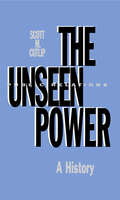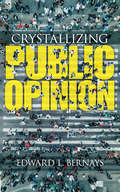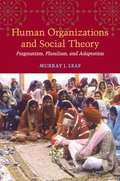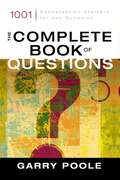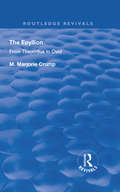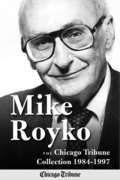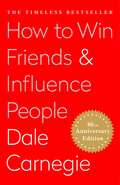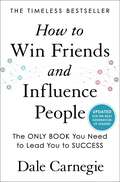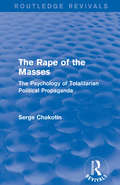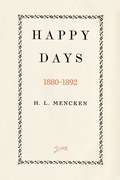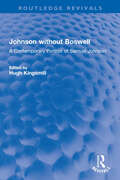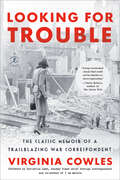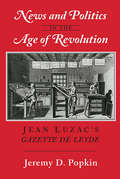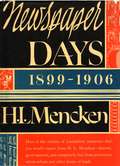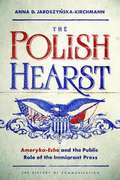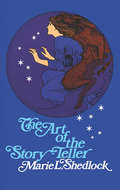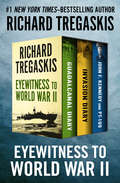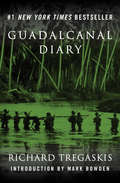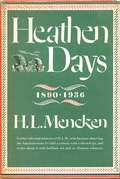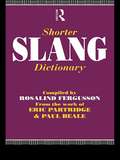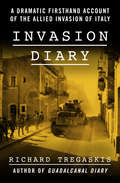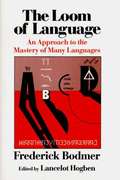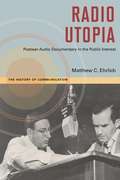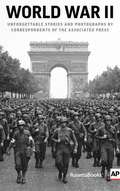- Table View
- List View
The Unseen Power: A History (Routledge Communication Series)
by Scott M. CutlipBased largely on primary sources, this book presents the first detailed history of public relations from 1900 through the 1960s. The author utilized the personal papers of John Price Jones, Ivy L. Lee, Harry Bruno, William Baldwin III, John W. Hill, Earl Newsom as well as extensive interviews -- conducted by the author himself -- with Pendleton Dudley, T.J. Ross, Edward L. Bernays, Harry Bruno, William Baldwin, and more. Consequently, the book provides practitioners, scholars, and students with a realistic inside view of the way public relations has developed and been practiced in the United States since its beginnings in mid-1900. For example, the book tells how: * President Roosevelt's reforms of the Square Deal brought the first publicity agencies to the nation's capital. * Edward L. Bernays, Ivy Lee, and Albert Lasker made it socially acceptable for women to smoke in the 1920s. * William Baldwin III saved the now traditional Macy's Thanksgiving Day parade in its infancy. * Ben Sonnenberg took Pepperidge Farm bread from a small town Connecticut bakery to the nation's supermarket shelves -- and made millions doing it. * Two Atlanta publicists, Edward Clark and Bessie Tyler, took a defunct Atlanta bottle club, the Ku Klux Klan, in 1920 and boomed it into a hate organization of three million members in three years, and made themselves rich in the process. * Earl Newsom failed to turn mighty General Motors around when it was besieged by Ralph Nader and Congressional advocates of auto safety. This book documents the tremendous role public relations practitioners play in our nation's economic, social, and political affairs -- a role that goes generally unseen and unobserved by the average citizen whose life is affected in so many ways by the some 150,000 public relations practitioners.
Crystallizing Public Opinion
by Edward BernaysFamed as "the father of public relations," Edward Bernays pioneered the technique of working to change attitudes rather than just selling products. In this 1923 classic, the first book ever written about the public relations industry, he delineates the approaches that corporations and governments have taken for the past century to influence social tendencies.Crystallizing Public Opinion identifies the techniques employed by public relations professionals, from authoritative-sounding surveys to persuasive endorsements from opinion leaders, celebrities, and experts. Bernays — whose high-profile clients included Procter & Gamble, General Electric, CBS, NBC, and Time, Inc. — cites examples from his successful campaigns, including a physician-endorsed promotion of bacon as a healthy breakfast option. He quotes leading theorists on the role of herd mentality in the minds of the educated as well as the ignorant, and he explains the value of communicating the right facts at the right time to a targeted audience. Although technology has changed in the years since this book's debut, human nature has not, and these principles remain of timeless value to business and marketing professionals, students of public relations, and other readers.
Human Organizations and Social Theory: Pragmatism, Pluralism, and Adaptation
by Murray J. LeafIn the 1930s, George Herbert Mead and other leading social scientists established the modern empirical analysis of social interaction and communication, enabling theories of cognitive development, language acquisition, interaction, government, law and legal processes, and the social construction of the self. However, they could not provide a comparably empirical analysis of human organization. The theory in this book fills in the missing analysis of organizations and specifies more precisely the pragmatic analysis of communication with an adaptation of information theory to ordinary unmediated communications. The study also provides the theoretical basis for understanding the success of pragmatically grounded public policies, from the New Deal through the postwar reconstruction of Europe and Japan to the ongoing development of the European Union, in contrast to the persistent failure of positivistic and Marxist policies and programs.
The Complete Book of Questions: 1001 Conversation Starters for Any Occasion
by Garry PooleThis book provides groups with 1,001 engaging and thought-provoking icebreaker questions to start and sustain meaningful conversations.
The Epyllion: From Theocritus to Ovid (Routledge Revivals)
by M. Marjorie CrumpPublished in 1931: The Epyllion From Theocritus to Ovid discusses Greek Epics along with extracts of Poems.
Mike Royko: The Chicago Tribune Collection 1984-1997
by Mike Royko John Kass Chicago Tribune StaffMike Royko: The Chicago Tribune Collection 1984-1997 is an expansive new volume of the longtime Chicago news legend's work. Encompassing thousands of his columns, all of which originally appeared in the Chicago Tribune, this is the first collection of Royko work to solely cover his time at the Tribune. Covering politics, culture, sports, and more, Royko brings his trademark sarcasm and cantankerous wit to a complete compendium of his last 14 years as a newspaper man.Organized chronologically, these columns display Royko's talent for crafting fictional conversations that reveal the truth of the small-minded in our society. From cagey political points to hysterical take-downs of "meatball" sports fans, Royko's writing was beloved and anticipated anxiously by his fans. In plain language, he "tells it like it is" on subjects relevant to modern society. In addition to his columns, the book features Royko's obituary and articles written about him after his death, telling the tale of his life and success.This ultimate collection is a must-read for Royko fans, longtime Chicago Tribune readers, and Chicagoans who love the city's rich history of dedicated and insightful journalism.
Speech-Making
by James A. WinansThere is no entirely satisfactory term to describe our subject. An earlier work of mine is entitled Public Speaking, a term some object to on the ground that public limits the field too much, for we are concerned with speeches addressed to groups of any size, whether audiences of thousands in public halls, or small groups in committee rooms or wherever people meet for discussion with closed doors.
How To Win Friends and Influence People: Large Print Edition (Deluxe Hardbound Edition Ser.)
by Dale CarnegieYOU CAN GO AFTER THE JOB YOU WANT...AND GET IT! YOU CAN TAKE THE JOB YOU HAVE...AND IMPROVE IT! YOU CAN TAKE ANY SITUATION YOU'RE IN...AND MAKE IT WORK FOR YOU! For more than sixty years the rock-solid, time-tested advice in this book has carried thousands of now famous people up the ladder of success in their business and personal lives. Now this previously revised and updated bestseller is available as eBook for the first time to help you achieve your maximum potential throughout the next century! Learn: * THREE FUNDAMENTAL TECHNIQUES IN HANDLING PEOPLE* THE SIX WAYS TO MAKE PEOPLE LIKE YOU* THE TWELVE WAYS TO WIN PEOPLE TO YOUR WAY OF THINKING* THE NINE WAYS TO CHANGE PEOPLE WITHOUT AROUSING RESENTMENT
How to Win Friends and Influence People: Updated For the Next Generation of Leaders (Deluxe Hardbound Edition Ser.)
by Dale CarnegieUpdated for the first time in more than forty years, Dale Carnegie&’s timeless bestseller How to Win Friends and Influence People—a classic that has improved and transformed the personal and professional lives of millions.This new edition of the most influential self-help book of the last century has been updated under the care of Dale&’s daughter, Donna, introducing changes that keep the book fresh for today&’s readers, with priceless material restored from the original 1936 text. One of the best-known motivational guides in history, Dale Carnegie&’s groundbreaking publication has sold tens of millions of copies, been translated into almost every known written language, and has helped countless people succeed. Carnegie&’s rock-solid, experience-tested advice has remained relevant for generations because he addresses timeless questions about the art of getting along with people. How to Win Friends and Influence People teaches you: -How to communicate effectively -How to make people like you -How to increase your ability to get things done -How to get others to see your side -How to become a more effective leader -How to successfully navigate almost any social situation -And so much more! How to Win Friends and Influence People is a historic bestseller for one simple reason: Its crucial life lessons, conveyed through engaging storytelling, have shown readers how to become who they wish to be. With the newly updated version of this classic, that&’s as true now as ever.
Routledge Revivals: The Psychology of Totalitarian Political Propaganda (Routledge Revivals)
by Serge ChakotinFirst published in French in 1939, and later in English in 1940, this work by the author, analyses and strongly critiques the effect of Nazi propaganda on the psychology of the masses. By bringing together the political and the psychological, the author refers to the use of propaganda in order to serve the ends of a handful of men as ‘psychical rape’ and warns that this phenomenon cannot be attributed solely to the Nazi regime. The English translation was updated to account for the outbreak of the Second World War in 1939. It will be of great interest to anyone studying the Second World War, Nazism, Fascism and the psychology of propaganda.
Happy Days: 1880-1892 (H.L. Mencken's Autobiography)
by H. L. MenckenWith a style that combined biting sarcasm with the "language of the free lunch counter," Henry Louis Mencken shook politics and politicians for nearly half a century. Now, fifty years after Mencken's death, the Johns Hopkins University Press announces The Buncombe Collection, newly packaged editions of nine Mencken classics: Happy Days, Heathen Days, Newspaper Days, Prejudices, Treatise on the Gods, On Politics, Thirty-Five Years of Newspaper Work, Minority Report, and A Second Mencken Chrestomathy. Most of these autobiographical writings first appeared in the New Yorker. Here Mencken recalls memories of a safe and happy boyhood in the Baltimore of the 1880s.
Johnson without Boswell: A Contemporary Portrait of Samuel Johnson (Routledge Revivals)
by Hugh KingsmillFirst published in 1940, Johnson without Boswell is about Samuel Johnson, the dictator of eighteenth-century English letters. It has become almost axiomatic never to mention that mammoth of wit and wisdom without linking him at least in thought with his great biographer, James Boswell. But there were others who knew him well, and who set down what they knew – among them Johnson himself in his letters and autobiographical fragments, his great friend Mrs. Thale in her Anecdotes, and Sir John Hawkins in his Life. From these and others, excerpted and skilfully pieced together in this volume by Hugh Kingsmill, there emerges a portrait of Johnson more domestic and less alarming than Boswell’s. But something of curmudgeon still, who could terrorise his table-companions by brandishing a knife and bellowing that by God he could eat a bit more. The result is a volume richly readable and informative, which can be read with pleasure either wholly or in part, especially by students of English literature.
Looking for Trouble: The Classic Memoir of a Trailblazing War Correspondent
by Virginia CowlesThe rediscovered memoir of an American gossip columnist turned &“amazingly brilliant reporter&” (The New York Times Book Review) as she reports from the frontlines of the Spanish Civil War and World War II&“A long-overlooked classic that could not be timelier or more engrossing.&”—Paula McLain, author of The Paris WifeForeword by Christina Lamb, Sunday Times chief foreign correspondent and co-author of I Am Malala Virginia Cowles was just twenty-seven years old when she decided to transform herself from a society columnist into a foreign press correspondent. Looking for Trouble is the story of this evolution, as Cowles reports from both sides of the Spanish Civil War, London on the first day of the Blitz, Nazi-run Munich, and Finland&’s bitter, bloody resistance to the Russian invasion. Along the way, Cowles also meets Adolf Hitler (&“an inconspicuous little man&”), Benito Mussolini, Winston Churchill, Martha Gellhorn, and Ernest Hemingway. Her reportage blends sharp political analysis with a gossip columnist&’s chatty approachability and a novelist&’s empathy. Cowles understood in 1937—long before even the average politician—that Fascism in Europe was a threat to democracy everywhere. Her insights on extremism are as piercing and relevant today as they were eighty years ago.
News and Politics in the Age of Revolution: Jean Luzac's "Gazette de Leyde"
by Jeremy D. PopkinAt the center of this book stands the story of a great but forgotten newspaper: the Gazette de Leyde, edited by Jean Luzac from 1772 to 1798. A French-language biweekly newspaper published in the Dutch city of Leiden from 1677 to 1811, the Gazette de Leyde was regarded as the international newspaper of record, occupying the cultural niche filled today by the New York Times and Le Monde. Jeremy D. Popkin reconstructs the Gazette's history, providing a comprehensive picture of the environment that produced it, how it gathered and printed its reports, its relationship with its readers, and the way it depicted the great events of three critical decades. In rich detail he shows that absolutist regimes often cooperated with the Gazette's editors, providing information and condoning its publication in open violation of their own censorship regimes. He also examines the Dutch context which fostered both the freedom that made the paper's publication possible and the technology and business skills that allowed for its rapid publication and successful marketing. In addition, he draws on a wide reading of the press of the period to compare the Gazette with other major newspapers. He concludes with a treatment of the paper's fortunes during the era of the French Revolution.
Newspaper Days: 1899-1906 (H.L. Mencken's Autobiography)
by H. L. MenckenOriginally published: New York: Knopf, 1941.
The Polish Hearst: Ameryka-Echo and the Public Role of the Immigrant Press
by Anna D Jaroszynska-KirchmannArriving in the U.S. in 1883, typesetter Antoni A. Paryski founded a publishing empire that earned him the nickname "The Polish Hearst." His weekly Ameryka-Echo became a defining publication in the international Polish diaspora and its much-read letters section a public sphere for immigrants to come together as a community to discuss issues in their own language. Anna D. Jaroszynska-Kirchmann mines seven decades' worth of thoughts expressed by Ameryka-Echo readers to chronicle the ethnic press's long-overlooked role in the immigrant experience. Open and unedited debate harkened back to homegrown journalistic traditions, and The Polish Hearst opens the door on the nuances of an editorial philosophy that cultivated readers as important content creators. As Jaroszynska-Kirchmann shows, ethnic publications in the process forged immigrant social networks and pushed notions of education and self-improvement throughout Polonia.
The Art of the Story-Teller
by Marie L. Shedlock"It is a delight to see a new edition of this long out-of-print book, the best on the subject of stpry-telling." -- The Junior Bookshelf. Everything you need to know to tell stories successfully to children: choosing material, using gestures, capturing straying attentions, more. 18 ready-for-telling stories written especially for youngsters. Annotated bibliography of 135 stories.
Eyewitness to World War II: Guadalcanal Diary, Invasion Diary, and John F. Kennedy and PT-109
by Richard TregaskisThree classic accounts of WWII from a reporter who &“shaped America&’s understanding of the war, and influenced every account that came after&” (Mark Bowden). Volunteer combat correspondent Richard Tregaskis risked life and limb to give American readers a soldier&’s–eye view of the Second World War. These three tales of bravery and sacrifice shed light on the Greatest Generation&’s darkest hours. Guadalcanal Diary: In August 1942, Tregaskis landed with the US Marines on Tulagi and Guadalcanal Islands in the South Pacific for the first major Allied offensive against Japanese forces. He details the first two months of the campaign and describes the courage and camaraderie of young marines who prepared for battle knowing that one in four of them wouldn&’t make it home. An instant #1 New York Times bestseller and the basis for a popular film of the same name, Guadalcanal Diary is a masterpiece of war journalism that &“captures the spirit of men in battle&” (John Toland). Invasion Diary: In July 1943, Tregaskis joined the Allied forces in Sicily and Italy and documented some of the fiercest fighting of the war, from bombing runs over Rome to the defense of the Salerno beachhead against heavy artillery fire to the fall of Naples. In compelling and evocative prose, Tregaskis depicts the terror and excitement of life on the front lines and his own harrowing brush with death when a chunk of German shrapnel pierced his helmet and shattered his skull. Invasion Diary is &“required reading for all who want to know how armies fight&” (Library Journal). John F. Kennedy and PT-109: In the early morning hours of August 2, 1943, the Japanese destroyer Amagiri sliced into US Navy motor torpedo boat PT-109 near the Solomon Islands. Ten surviving crewmembers and their young skipper, Lt. John F. Kennedy, clung to the wreckage. Over the next three days, the privileged son of a Boston multimillionaire displayed extraordinary courage and leadership as he risked his life to shepherd his crew to safety and coordinate a daring rescue mission deep in enemy territory. Lieutenant Kennedy earned a Navy and Marine Corps Medal and a Purple Heart, and the story of PT-109 captured the public&’s imagination and helped propel Kennedy all the way to the White House. Acclaimed war correspondent Tregaskis—who once beat out the future president for a spot on the Harvard University swim team—brings this remarkable chapter in American history to vivid life.
Guadalcanal Diary: Guadalcanal Diary, Invasion Diary, And John F. Kennedy And Pt-109
by Richard Tregaskis#1 New York Times Bestseller: The definitive eyewitness account of one of the bloodiest and most pivotal battles of World War II. On August 7, 1942, eleven thousand US Marines landed on Tulagi and Guadalcanal Islands in the South Pacific. It was the first major Allied offensive against Japanese forces; the first time in history that a combined air, land, and sea assault had ever been attempted; and, after six months of vicious fighting, a crushing defeat for the Empire of Japan and a major turning point in the Pacific War. Volunteer combat correspondent Richard Tregaskis was one of only two journalists on hand to witness the invasion of Guadalcanal. He risked life and limb to give American readers a soldier's experience of the war in the Pacific, from the suffocating heat and humidity to the unique terror of fighting in tall, razor-sharp grass and in crocodile-infested jungle streams against a concealed enemy. In understated yet graceful prose, Tregaskis details the first two months of the campaign and describes the courage and camaraderie of young marines who prepared for battle knowing that one in four of them wouldn't make it home. An instant bestseller when it was first published in 1943 and the basis for a popular film of the same name, Guadalcanal Diary set the standard for World War II reportage. Hailed by the New York Times as "one of the literary events of its time," it is a masterpiece of war journalism whose influence can be found in classic works such as John Hersey's Hiroshima, Michael Herr's Dispatches, and Dexter Filkins's The Forever War. This ebook features an illustrated biography of Richard Tregaskis including rare images from the American Heritage Center at the University of Wyoming.
Heathen Days: 1890-1936 (H.L. Mencken's Autobiography)
by H. L. MenckenWith a style that combined biting sarcasm with the "language of the free lunch counter," Henry Louis Mencken shook politics and politicians for nearly half a century. Now, fifty years after Mencken's death, the Johns Hopkins University Press announces The Buncombe Collection, newly packaged editions of nine Mencken classics: Happy Days, Heathen Days, Newspaper Days, Prejudices, Treatise on the Gods, On Politics, Thirty-Five Years of Newspaper Work, Minority Report, and A Second Mencken Chrestomathy. In the third volume of his autobiography, H. L. Mencken covers a range of subjects, from Hoggie Unglebower, the best dog trainer in Christendom, to his visit to the Holy Land, where he looked for the ruins of Gomorrah.
Shorter Slang Dictionary
by Paul Beale Eric PartridgeFrom abdabs to zit From pillock (14th century) to couch potato (20th century) From She'll be apples (Australia) to the pits (USA) This new collection brings together some 5,000 contemporary slang expressions originating in all parts of the English-speaking world. It gives clear and concise definitions of each word, supplemented by examples of their use and information about where and when they came into being. This entertaining reference work will be of use to students of English at all levels and a source of fascination to word-lovers throughout the world.
Invasion Diary: A Dramatic Firsthand Account of the Allied Invasion of Italy
by Richard TregaskisA dramatic and richly detailed chronicle of the Allied invasions of Sicily and Italy from one of America's greatest war correspondents. Following the defeat of Axis forces in North Africa, Allied military strategists turned their attention to southern Italy. Winston Churchill famously described the region as the "soft underbelly of Europe," and claimed that an invasion would pull German troops from the Eastern Front and help bring a swift end to the war. On July 10, 1943, American and British forces invaded Sicily. Operation Husky brought the island under Allied control and hastened the downfall of Benito Mussolini, but more than one hundred thousand German and Italian troops managed to escape across the Strait of Medina. The "soft underbelly" of mainland Italy became, in the words of US Fifth Army commander Lt. Gen. Mark Clark, "a tough old gut." Less than a year after landing with the US Marines on Guadalcanal Island, journalist Richard Tregaskis joined the Allied forces in Sicily and Italy. Invasion Diary documents some of the fiercest fighting of World War II, from bombing runs over Rome to the defense of the Salerno beachhead against heavy artillery fire to the fall of Naples. In compelling and evocative prose, Tregaskis depicts the terror and excitement of life on the front lines and recounts his own harrowing brush with death when a chunk of German shrapnel pierced his helmet and shattered his skull. An invaluable eyewitness account of two of the most crucial campaigns of the Second World War and a stirring tribute to the soldiers, pilots, surgeons, nurses, and ambulance drivers whose skill and courage carried the Allies to victory, Invasion Diary is a classic of war reportage and "required reading for all who want to know how armies fight" (Library Journal). This ebook features an illustrated biography of Richard Tregaskis including rare images from the American Heritage Center at the University of Wyoming.
The Loom Of Language
by Frederick Bodmer Lancelot HogbenHere is an informative introduction to language: its origins in the past, its growth through history, and its present use for communication between peoples. It is at the same time a history of language, a guide to foreign tongues, and a method for learning them. It shows, through basic vocabularies, family resemblances of languages―Teutonic, Romance, Greek―helpful tricks of translation, key combinations of roots and phonetic patterns. It presents by common-sense methods the most helpful approach to the mastery of many languages; it condenses vocabulary to a minimum of essential words; it simplifies grammar in an entirely new way; and it teaches a languages as it is actually used in everyday life. But this book is more than a guide to foreign languages; it goes deep into the roots of all knowledge as it explores the history of speech. It lights up the dim pathways of prehistory and unfolds the story of the slow growth of human expression from the most primitive signs and sounds to the elaborate variations of the highest cultures. Without language no knowledge would be possible; here we see how language is at once the source and the reservoir of all we know.
Radio Utopia: Postwar Audio Documentary in the Public Interest
by Matthew C. EhrlichAs World War II drew to a close and radio news was popularized through overseas broadcasting, journalists and dramatists began to build upon the unprecedented success of war reporting on the radio by creating audio documentaries. Focusing particularly on the work of radio luminaries such as Edward R. Murrow, Fred Friendly, Norman Corwin, and Erik Barnouw, Radio Utopia: Postwar Audio Documentary in the Public Interest traces this crucial phase in American radio history, significant not only for its timing immediately before television, but also because it bridges the gap between the end of the World Wars and the beginning of the Cold War. Matthew C. Ehrlich closely examines the production of audio documentaries disseminated by major American commercial broadcast networks CBS, NBC, and ABC from 1945 to 1951. Audio documentary programs educated Americans about juvenile delinquency, slums, race relations, venereal disease, atomic energy, arms control, and other issues of public interest, but they typically stopped short of calling for radical change. Drawing on rare recordings and scripts, Ehrlich traces a crucial phase in the evolution of news documentary, as docudramas featuring actors were supplanted by reality-based programs that took advantage of new recording technology. Paralleling that shift from drama to realism was a shift in liberal thought from dreams of world peace to uneasy adjustments to a cold war mentality. Influenced by corporate competition and government regulations, radio programming reflected shifts in a range of political thought that included pacifism, liberalism, and McCarthyism. In showing how programming highlighted contradictions within journalism and documentary, Radio Utopia reveals radio's response to the political, economic, and cultural upheaval of the post-war era.
World War II: Unforgettable Stories and Photos by Correspondents of The Associated Press
by The Associated PressPowerful, visceral, and essential to preserving and understanding our past, the work of Associated Press photographers and journalists lives on through the pages of World War II.Never before in history had the day-to-day struggles and victories of war—from the home front to the front lines—been chronicled in such graphic and unflagging detail as during the Second World War. Nearly 200 photographers and reporters of Associated Press volunteered to cover the war across the globe from 1939 through 1945. The heroic achievements of these reporters and photographers—some of whom gave their lives—are remembered through the stunning photographs and moving firsthand reports of World War II: Unforgettable Stories and Photographs by Correspondents of The Associated Press.World War II commemorates the experiences of the individuals who brought the war into the homes of millions of Americans. Originally published in 1945 as Reporting to Remember: Unforgettable Stories and Pictures of the War by Associated Press Correspondents, this updated anniversary edition includes a new interview with former AP World War II correspondent George Bria, as well as a new Foreword by current AP Vice President for International News John Daniszewski.
